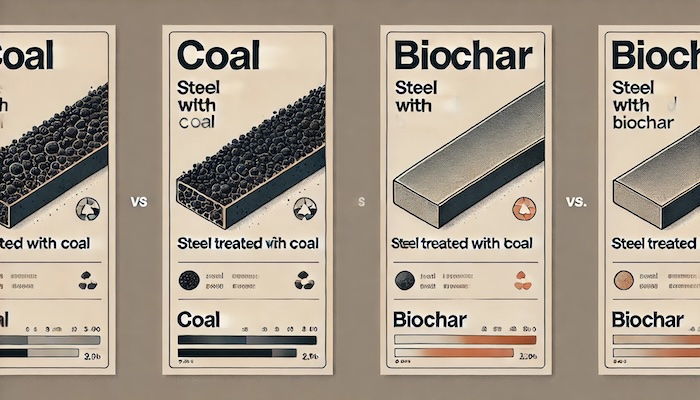
Lowering Emissions and Enhancing Quality: The Game-Changing Role of Biochar in Modern Steelmaking
Biochar, a carbon-rich material derived from biomass through pyrolysis, is emerging as a superior alternative to coal in steel production. Its unique properties not only enhance steel quality but also significantly reduce the carbon footprint of the industry, addressing two critical challenges simultaneously.
Enhanced Steel Quality
Biochar’s high fixed carbon content and low impurity levels, such as sulfur and phosphorus, make it ideal for metallurgical applications. Impurities in coal often lead to defects in steel, compromising its strength and durability. Biochar, on the other hand, produces cleaner steel with fewer inclusions and improved metallurgical properties. Additionally, biochar’s porous structure facilitates better gas permeability in furnaces, optimizing the reduction process and improving overall efficiency. This leads to higher yields of high-quality steel with enhanced tensile strength and toughness.
Reduced Carbon Emissions
Steel production is one of the largest industrial contributors to greenhouse gas emissions, primarily due to the reliance on coal as a reducing agent. Biochar offers a renewable and carbon-neutral alternative. Unlike coal, which releases stored fossil carbon when burned, biochar is derived from biomass, which absorbs carbon dioxide during its growth. When used in steel production, biochar emits significantly less CO2, effectively reducing the industry’s carbon footprint. Moreover, biochar’s ability to sequester carbon further contributes to its environmental benefits, aligning with global efforts to achieve net-zero emissions.
A Sustainable Future for Steelmaking
Incorporating biochar into steel production represents a paradigm shift toward sustainable metallurgy. By improving steel quality and drastically lowering emissions, biochar not only addresses immediate industrial needs but also paves the way for a greener future. Transitioning to biochar is a win-win solution, marrying economic and environmental goals in one innovative approach.

